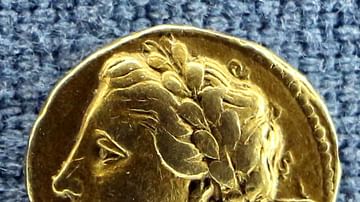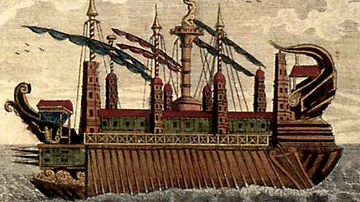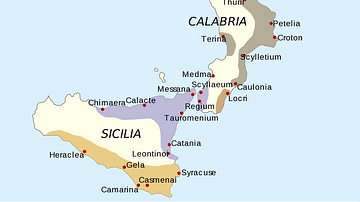Server Costs Fundraiser 2024
Help our mission to provide free history education to the world! Please donate and contribute to covering our server costs in 2024. With your support, millions of people learn about history entirely for free every month.
$3926 / $18000
Video
by CHNT Vienna
published on 04 March 2016
2013 CHNT Video Award - Vote if you like it!
Davide TANASI / Francesco GABELLONE / Ivan FERRARI
(Arcadia University, The College of Global Studies, Siracusa / CNR IBAM, Lecce, Italy)
Abstract:
The ignorance or the mis-knowledge of the archaeological background of a modern city can negatively affect its economy and cultural growth, limiting attractivity and spreading erroneous or distorted messages over media. The Sicilian case of Siracusa is definitely emblematic. Founded by the Corinthians in 733 BC, birthplace of poets and thinkers as Epicharmus and Archimedes, visited by many prominent figures of Greek culture as Pindar, Aeschylus and Plato, Siracusa over centuries became one of the most beautiful, influential and wealthy among the Greek cities of the Mediterranean basin, as the majestic temples testified. Nonetheless, regardless the historical background and the imposing visible remains of that past emerging everywhere in the actual urban area, Siracusa, since 2005 World Heritage site, has never played the role of quintessential archetype of Greek city both in the scientific literature and the mainstream.
Against this scenario a virtual archaeology project, undertook by a team of scholars of the IBAM-CNR and The Arcadia University — TCGS, aimed to the overall digital reconstruction of Ortigia, the core district of the Greek Siracusa, produced a 3D documentary 'Siracusa 3D reborn', that represents a pivotal advance in the knowledge of the Greek background of the city. In this perspective, the choice of providing 'passive' cognitive tools embedded with communicational and emotional components did not affected the scientific accuracy with which the reconstructive process has been carried out. Main monuments of Ortigia are described and analyzed in the context of a full 3D stereoscopic representation employing techniques of modern cinema industry for elucidating and explaining its historical and archaeological characteristics. The reconstructive workflow followed a meticulous methodological plan based on the published data and aimed to define a previously unavailable topographic profile of the city, portrayed in two main chronological phases, Archaic and Late Classical.
Keywords: Reconstructive study, virtual archaeology, 3D theater
CHNT - Vienna | Conference on Cultural Heritage an New Technologies
November 11 - 13, 2013 | Vienna, Austria - http://www.chnt.at
CHNT Video Award - supported by 7reasons - http://www.7reasons.at
License & Copyright
Original video by CHNT Vienna. Embedded by Mark Cartwright, published on 04 March 2016. Please check the original source(s) for copyright information. Please note that content linked from this page may have different licensing terms.
The video and its description text are provided by Youtube. This website claims no authorship of this content; we are republishing it for educational purposes.





